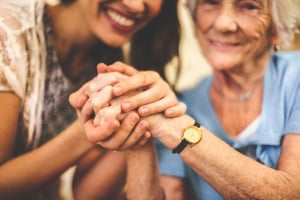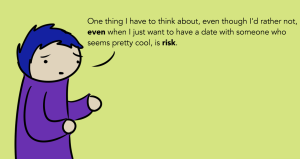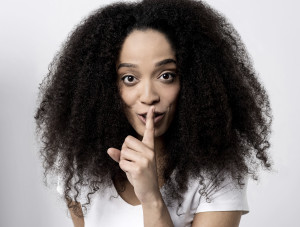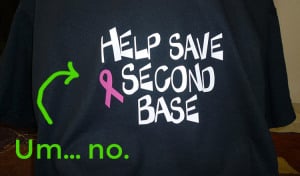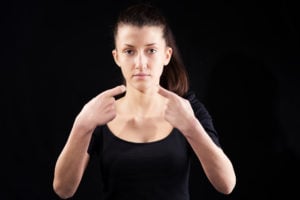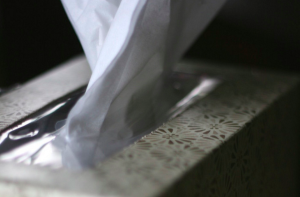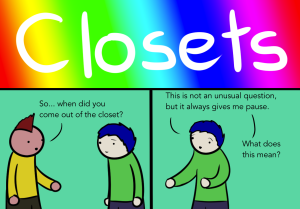I ka wā ma mua, ka wā ma hope – the future is in the past.
This is an olelo no’eau, or a saying in the Hawaiian language that is used to share important lessons.
The future being in the past can be interpreted in many ways; it could reference not repeating past mistakes, or even just being critical of the history that informs our current existence.
When I hear that saying, though, my mind immediately jumps to elders and the vital role they play in the community.
They hold a central role in strengthening and supporting our communities, and our beliefs say that we should honor them for the knowledge and experience they bring.
But what do we do when elders are not being honored? What if our elders are being abused?
I want to take some time today to examine how elder abuse shows up in our Native communities and what we all can do about it. This isn’t an issue commonly talked about, but it’s definitely impacting our communities.
The CDC estimates that 1 in 10 elders over the age of 60 experience abuse, and as with all abuse statistics, that’s likely low due to underreporting.
If we’re truly invested in honoring our elders, then we need to understand what elder abuse is, how to recognize it, and what steps we can take to address it.
Before I dive in, I want to note two things.
First, I’m talking about elder abuse in Native communities (including tribes on the continental US, Alaska Natives, and Native Hawaiians) because that’s been my own lived experience. This isn’t to say that all Native communities in the US can be generalized, but rather to highlight some of the most common ways that elder abuse impacts all of our communities.
Second, while this article is looking specifically at elder abuse in Native communities, much of what will be discussed can also be applied in non-Native communities. For non-Native readers or folks living in predominantly non-Native communities, be thinking about how this article might translate to your own community!
So, without further ado, let’s dig into how elder abuse show up in Native communities and what we can do about it.
What, Exactly, Constitutes Elder Abuse?
Before we can do anything to support elders and address elder abuse in our communities, we first need to understand what elder abuse is.
Here are the types of elder abuse that are most commonly seen:
1. Neglect and Physical Harm
This can include failing to meet an elder’s needs, denying them medical care, physically abusing or injuring them, or treating them in a way that indirectly leads to injury.
It might also include threatening an elder with a weapon or inappropriately restraining them.
2. Sexual Abuse
This is anything sexual done without the elder’s consent.
It is not limited to penetration; intentional touching (either over the clothing or under) of the elder’s genitals, groin area, buttocks, inner thighs, anus, or breasts against the will of the elder is also sexual abuse.
Sexually harassing comments may also be a form of sexual abuse.
3. Emotional and Verbal Abuse
This can include intentionally humiliating or embarrassing the elder, someone displaying controlling behavior towards the elder, making threats, or otherwise behaving with intent to cause the elder mental or emotional anguish.
4. Exploitation
This could include financial abuse, stealing an elder’s medicines, or using manipulation to gain control of an elder’s property or belongings.
5. Abandonment and Forced Isolation
A caregiver may completely abandon the elder.
A caregiver may also seek to isolate the elder from the rest of the community to create complete dependency and lessen the likelihood of others noticing or reporting the abuse.
These are obviously not exhaustive; just like with other forms of abuse, elder abuse has myriad forms, and it would be impossible to list them all.
If there is a specific situation and you aren’t sure whether it fits into any of these categories, ask yourself whether the elder has agency and whether any harm is being caused to the elder.
If the elder doesn’t have agency (meaning the ability to willingly engage in or consent to the behavior without force or coercion being used) or if harm is being caused, then it’s worthwhile to ask some more questions and make sure the elder is getting support if they need it.
What Are Some Common Signs of Elder Abuse?
Common signs of elder abuse can include:
- Fear of a particular person or frequent arguments or tension with their caregiver
- Suddenly wanting to change living arrangements, especially if they were previously content
- Physical signs of injury or neglect (such as bruises, cuts, weight loss, or bedsores)
- Formerly engaged elder suddenly absent from the community
- Elder’s items going missing (if belongings are being taken and sold)
- Other unexplained sudden changes in the elder’s behavior or personality
Now, the ways that symptoms or signs of elder abuse might manifest in Native communities can be influenced by a number of factors.
Colonization, racism, sexism, and all the other oppressions have a centuries-long history in our communities, and they can all influence how elder abuse shows up and whether we recognize the signs.
Take a few moments to think about your own community and any elders you know, and reflect on how (if at all) you might notice these or other signs of elder abuse.
Here’s What You Can Do to Address Elder Abuse
Now that you know what elder abuse is and some of the ways it might show up in your community, it’s time to talk about translating that knowledge into action.
It can feel overwhelming to think about how you might confront elder abuse if you notice it happening, so here are four simple strategies to get you started.
1. Be Present in the Lives of Elders in Your Community
Sometimes it can feel like you have to have formal training in order to address elder abuse, and that’s not necessarily the case.
Sure, there are some roles where you do need training (like legal advocates, medical personnel, or formally employed elder advocates), but with a little work, you can start addressing elder abuse in your community right now.
The first step is to work on getting to know the elders in your community.
I firmly believe that it’s important to have relationships with elders regardless of whether elder abuse is happening, but if you’re not present with elders in the first place, you’ll likely never know if abuse is taking place.
Building relationships with elders doesn’t have to be some super serious thing.
Do they have a weekly bingo night? Then go hang out at the bingo hall with them! If they have a drum group, drop by and potluck with them and sing (or learn!) a few songs. Do you have elders who need wood chopped for the winter or their driveway plowed? Check in to make sure everything is taken care of! Depending on where you are, you might have an Elder’s Lodge, or an Elder’s Community Center, where you can swing by and visit.
Really, it’s all about genuinely and consistently building and strengthening those relationships.
Just like anyone else, elders are way less likely to share personal stories with someone they’ve just met.
Invest in the relationships, and keep showing up.
If you do, you might start to notice things. Maybe the ladies you sit with at bingo are talking about how their friend just stopped coming and they haven’t seen her recently, or you notice when you go to deliver firewood that an elder’s car is suddenly missing and their lights have been shut off.
Those are red flags that you can follow up on, and it’s going to be much easier to check in with somebody if you two already know each other!
2. Don’t Be Afraid to Ask Questions If You Aren’t Sure If a Situation Is Abusive
There are going to be some situations that are clearly elder abuse, but many other times, you might not know for sure. This is an opportunity for you to check in with the elder and ask some questions.
Give them the space to talk about what they’re experiencing and ask follow-up questions.
For example, I’ve heard about elders being exploited by family members and guilted into babysitting 24/7 or not being given a say in whether family is going to stay with them for extended periods of time.
It’s tricky to definitively call this abuse, because many of our communities value intergenerational relationships, and elders would love to be able to care for their grandkids or great grandkids or to provide a safe space for relatives to stay if needed.
In this situation, it’s a good idea to ask some questions rather than assume you know exactly what’s going on. You can reflect what you’re hearing back at the elder and then create an opportunity for them to share more.
It can be something as simple as, “Wow, it sounds like you’ve been getting to spend a lot of time with your grandkids! How has it been going?”
They might say it’s been great. And if they do, then respect that. They know what’s best for them better than you do.
But if they say that they’re exhausted, then you can ask more questions to figure out what the elder might want to change in order to be happier and healthier. It could be that they still want to watch their grandkids most of the time, but they want help watching them Thursday nights so that they can go to their bingo game and relax for a few hours.
Regardless of what they end up talking about or deciding on, it’s important to ask those questions.
Assuming we know more about what’s going on than the elder does is not a good way of honoring their knowledge and experience, and it’s not a good way to be in relation to other people in general.
Simply asking questions and listening to the answers can help clarify whether a situation is elder abuse and what the elder might want in terms of support.
3. Recognize the Reasons Elders May Not Want to Disclose or Acknowledge Abuse
Elder abuse doesn’t occur in a vacuum, so someone’s past experiences with sexual violence, domestic abuse, and other forms of violence might impact how they respond.
For example, we know that 1 in 3 Native women are raped, and countless Native youth were abused sexually and physically in boarding schools.
Violence against us is rampant, and our elders hold the weight of past violence along with current abuse they might be experiencing.
If an elder was abused as a child and has lived through other sexual assaults throughout their life, that’s going to impact how they respond to the current abuse.
If they had positive and empowering experiences being able to speak out about past abuses and violence, that might make them more likely to name what they’re currently experiencing as abuse and to seek support.
But if they have never disclosed their past experiences for fear of being blamed, shamed, or disbelieved, then it may make it even more difficult to disclose the current abuse.
Talking about what’s going on now could trigger past trauma, so an elder might not acknowledge abuse.
In addition, our communities face violence from law enforcement on a regular basis.
Native Americans are the racial group most likely to be killed by police, and this violence is a continuation of the brutality Native folks have faced due to colonization.
An elder might not want to report or disclose what’s going on because they’re afraid of getting the police involved, especially if their abuser is a relative.
No matter what the reason an elder decides not to disclose or report, do your best to validate their experiences and continue to support them in ways that are comfortable to them.
4. Know What Resources Are Available in Your Community
I haven’t said it yet because I don’t want it to be your go-to if you suspect elder abuse, but it’s important: If you have reason to believe an elder is in imminent danger, the option to call 911 or get emergency response services involved is always there.
I say that I don’t want this to be your go-to because it takes the choice away from the elder, and in situations where there is not imminent danger, I would typically advocate for letting the elder choose whether to involve law enforcement.
If it’s not a situation that requires an immediate crisis response, then it’s helpful to know what resources are available in your community.
Do you have an elder advocate? Are there tribal services available that the elder might want to use? Do you have sexual assault or domestic violence advocates in your community? Is there a shelter available that is accessible to elders?
Just be aware of what’s out there so that if you’re ever in a situation where an elder wants those resources, you can help point them in the right direction or get them connected.
These are also great resources for you, too – in case you have questions or want support for how best to support someone else!
***
There is so much more that could be discussed about elder abuse, and you can do some additional reading here, here, and here if you want to learn more.
For now, though, remember that you have the ability to create positive change in your own community.
Talk to friends and family so that they’re aware of elder abuse and what they can do, and continue striving to strengthen your relationships with elders. If you don’t already have an elder abuse code in your tribe, organize the community to lobby for the tribe to pass one to ensure that elders have protections within the tribe. Break the silence around elder abuse and advocate for services and community spaces that are accessible to elders.
I don’t believe a community can be truly healthy if its elders are suffering, and it is all of our responsibility to make sure our elders are being honored in action and not just in word.
[do_widget id=’text-101′]
Mahealani Joy is a Contributing Writer for Everyday Feminism and kanaka maoli queer woman currently living in the Midwest. They are involved in organizing to end sexual violence against Native women and finding ways to strengthen Indigenous communities.
Search our 3000+ articles!
Read our articles about:
Our online racial justice training
Used by hundreds of universities, non-profits, and businesses.
Click to learn more
Most Read Articles
- « Previous
- 1
- …
- 30
- 31
- 32


